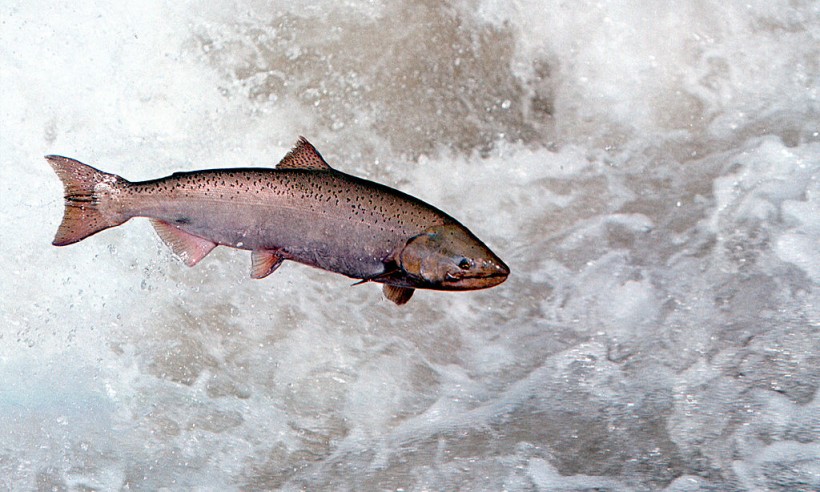In the face of rising global temperatures, cold-loving fish species, including Atlantic salmon and brook trout, face a critical challenge in their quest for survival.
These aquatic creatures require specific temperature ranges to thrive, typically between 43°F and 72°F. Prolonged exposure to water temperatures exceeding 82°F can lead to stress, illness, or even death.
To address this issue, a group of civil engineers from Dalhousie University has engineered a groundbreaking solution: artificial cold-water patches resembling underwater "air conditioning" for fish, Interesting Engineering reports.
These innovative thermal refuges are designed to provide respite for fish when confronted with warmer water conditions, offering them a lifeline in the battle against climate-induced river warming.
The engineers presented the results of their groundbreaking experiment during the Geological Society of America's GSA Connects 2023 event, held in October.

A Chinook Salmon Leaps Through White Water May 17, 2001 In The Rapid River In Idaho As It Attempts To Clear A Migration Barrier Dam. Ideal Stream And Ocean Conditions Over The Past Two Years Have Resulted In A Record Number Of Chinook Returning To Their Spawning Grounds This Year.
The Hunt for Cool-Water Patches
In the natural world, fish in distress due to rising water temperatures often seek out naturally occurring cold-water zones, known as "thermal refuges."
These refuges are typically found near groundwater springs, where cold water flows into the river. They are essential for maintaining resilient and diverse aquatic ecosystems capable of withstanding both short-term heatwaves and the potential long-term effects of climate warming.
However, the distribution of these thermal refuges is far from uniform in space, making it challenging for fish to find such vital cool-water sanctuaries.
To address this problem, the team of engineers took on the challenge of constructing engineered thermal patches to help these fish endure elevated temperatures, particularly during the sweltering summer months.
The experiment took place in the warm areas of Wrights River in Nova Scotia, Canada. The team used two distinct approaches to create these artificial cold-water patches: active and passive methods.
Read Also: Robot Guide Dog Responding to Tugs on Its Leash Could Help Blind and Visually Impaired People
Two Innovative Approaches
According to Time, the team used two methods: passive and active.
The Active Approach: In this method, cold water from a well was introduced directly into the river, creating a cold oasis amidst the heated waters. Fish quickly gravitated towards these artificially established cold-water zones, providing a haven from the scorching temperatures.
The Passive Approach: In this method, a branch of the river was rerouted underground for a specific distance. During this journey, the water cooled through contact with the surrounding soil and rocks. When the offshoot rejoined the main river channel, it created an area of water several degrees cooler than the surroundings, enticing fish to seek refuge.
Both approaches proved successful, with the active method attracting more fish, especially during a July heatwave that coincided with the experiment.
The team employed cutting-edge technology, including thermal infrared cameras and water temperature recorders mounted on drones, as well as time-lapse cameras to monitor fish behavior and evaluate the performance of the dynamic thermal refuge system.
These promising results mark a significant step towards protecting cold-water species in the face of climate change-induced river warming. However, more research is necessary to determine the number of artificial cold patches required and how to sustain them efficiently, considering energy expenses and environmental impact.
Stay posted here at Tech Times.
Related Article: Aerial Helicopter Shooting to Control Wild Horse Overpopulation in Australian National Park










